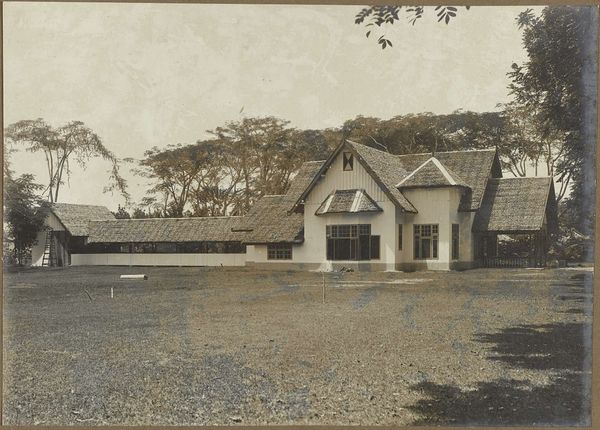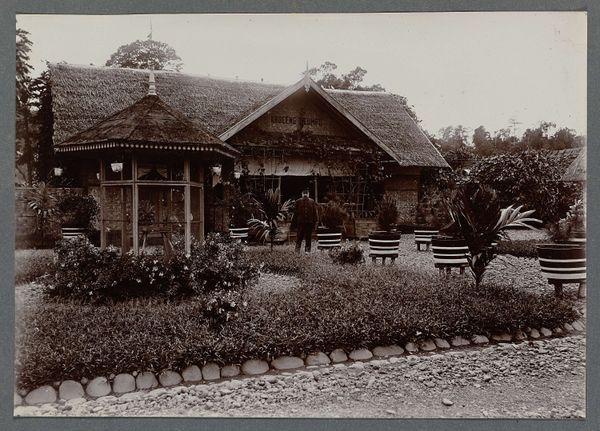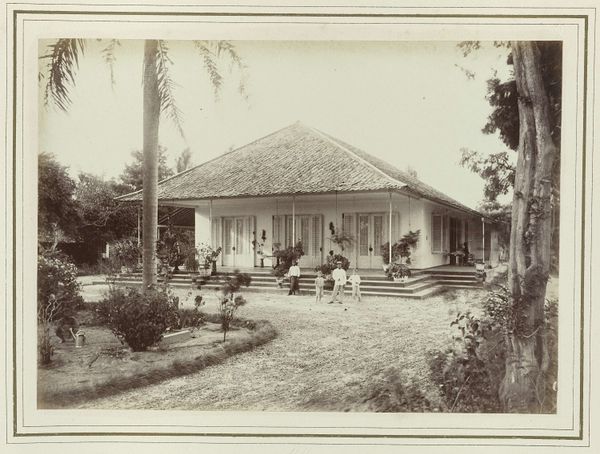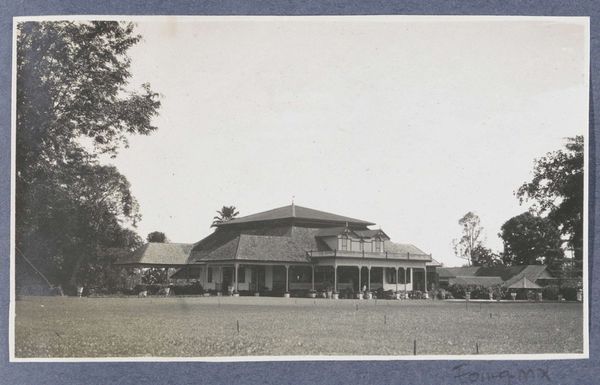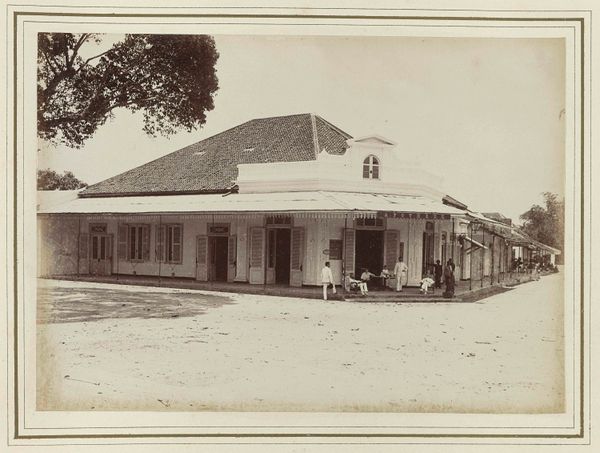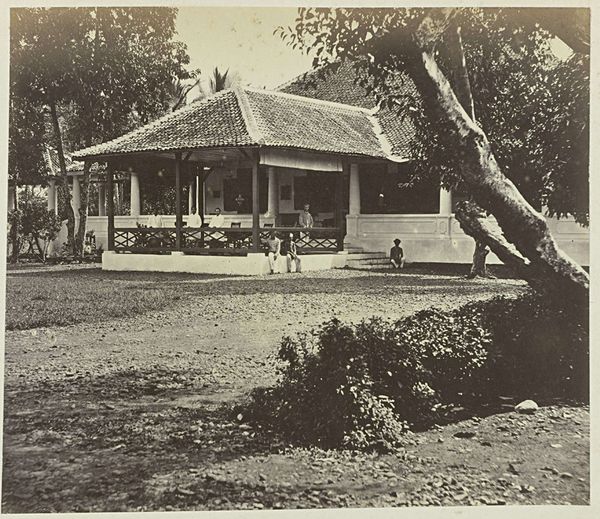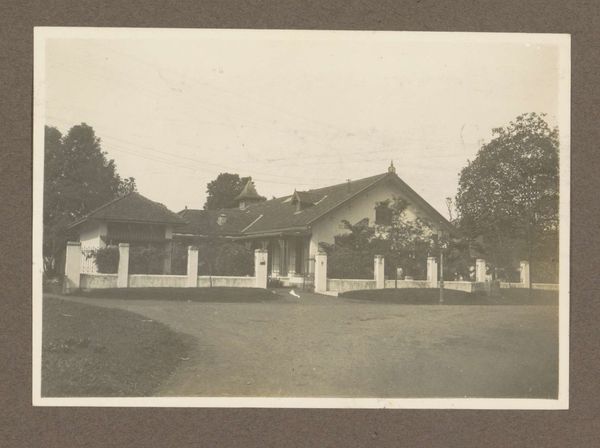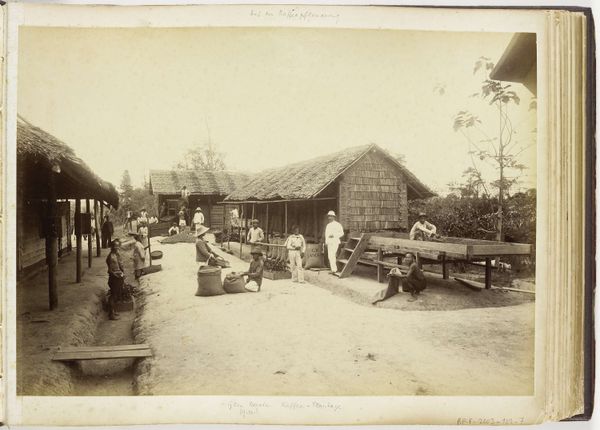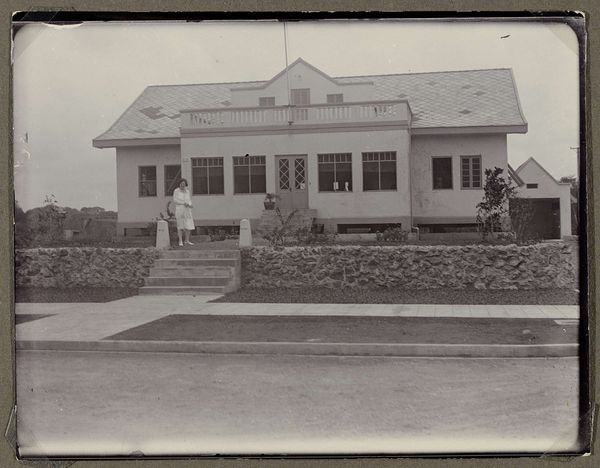
plein-air, photography, architecture
#
plein-air
#
landscape
#
photography
#
architecture
Dimensions: height 138 mm, width 200 mm
Copyright: Rijks Museum: Open Domain
Curator: The sepia tones lend a hazy, almost dreamlike quality. Editor: Indeed. This is an early 20th-century photograph, sometime between 1903 and 1913. It’s titled "Officierswoning in de bivak te Krueng Seumpo", and depicts a colonial officers’ dwelling within a military camp. Note the architectural style of the house, blending local materials, such as the thatched roof, with the familiar forms of European domestic architecture. Curator: That thatched roof immediately speaks to the location, right? The texture! And the way it contrasts with the precisely ordered potted plants lined up in front. There's an interesting dialogue happening here between imported aesthetics and indigenous materials. Editor: Exactly. And consider the purpose of such a photograph in the early 1900s. This was very likely produced as a form of documentation and promotion, intended to portray the colonizers’ life as comfortable and civilized in a “foreign” land. Think about the effort involved in producing a 'plein-air' photograph such as this at the time: this was not a candid shot. The house itself becomes a symbol of power. Curator: You can really see the construction; look at the joints of the timberwork, and even the details of how the pots are made with individual staves. It is quite artful work. There's so much intentional crafting apparent here, both in the architecture and the landscape design. This speaks to a specific relationship with labour and skill in colonial contexts. Editor: It absolutely does. And let’s not forget the individuals in the photograph – the officers, the children. Their inclusion humanizes the image but also reinforces a social hierarchy. What are they doing in this space, and how are they projecting an image of colonial dominance? Curator: I see the domestic angle alongside its clear construction, a window into the lifestyle that depended so fundamentally on natural resources of a controlled territory. Editor: It's remarkable how a single image can open up such rich veins of historical and cultural analysis. Curator: I agree. And focusing on material traces offers a window onto historical values too.
Comments
No comments
Be the first to comment and join the conversation on the ultimate creative platform.

